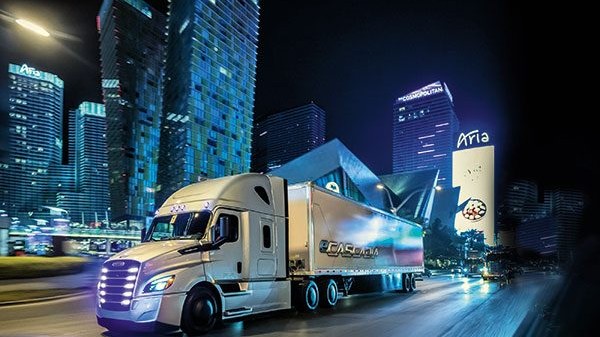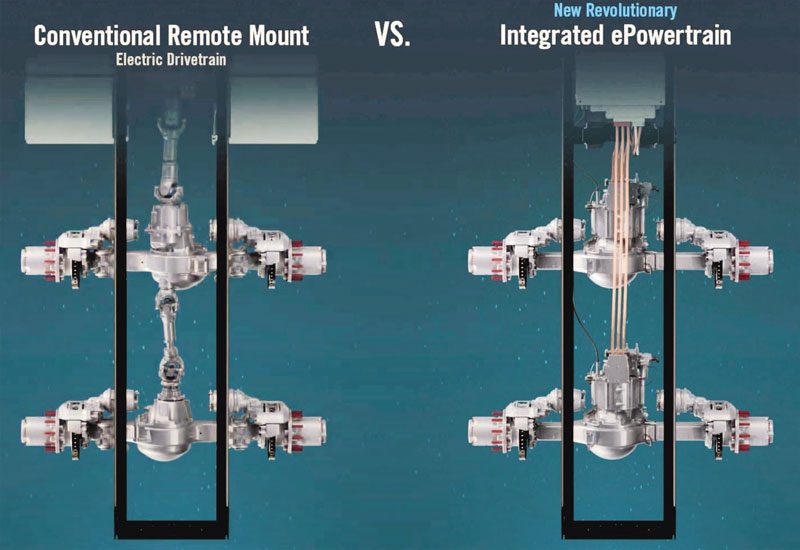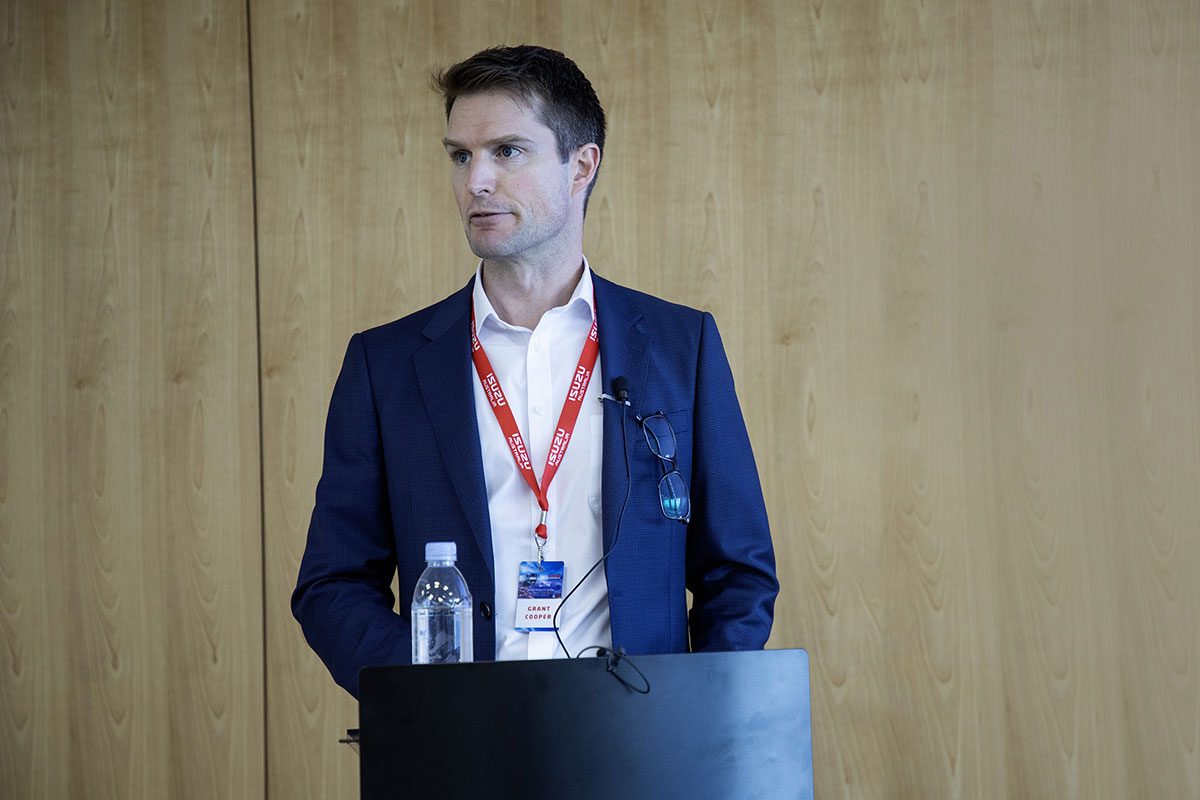New Moves for Traditional Gear

The move to e-mobility is marching on at a relentless pace. Even names once firmly associated with the grease and grime of internal combustion have adapted to keep up with the changing automotive landscape. We look at a few recent developments.
For decades, component suppliers Dana, Eaton, Meritor, Allison and ZF have been associated with drivetrain and axle components for vehicles powered by internal combustion engines. But the traditional method for transmitting drive from the power unit to the wheels is set for a change. Sending power through a multi-speed gearbox, down a prop shaft to axles fitted with differentials and driveshafts, and finally on to the wheels, will change either wholly or partly with the arrival of medium- and heavyelectric vehicles (EVs).
With the traditional dieselburner relegated to the history books, pure electromobility (ignoring, for now, the likes of hydrogen fuel cells) means batteries and electric motors will slot in place to take over. And that’s where some significant, innovative engineering enters the picture.
 Dana Zero-8 single
Dana Zero-8 single
Dana
Dana Incorporated has been busy developing commercially available e-Powertrain components for light and heavy commercial vehicles.
Dana already has established heavy-duty electric-vehicle e-Propulsion systems, which are currently powering thousands of vehicles worldwide. In early September, it announced an expansion of its Spicer Electrified e-Powertrain offerings to include a family of single and tandem e-axles designed for a wide variety of heavy-truck applications, including systems for direct drive and now 4×2, 6×2, and 6×4 multi-speed e-axle systems.
The Zero-8 e-axles incorporate vertically integrated TM4 motors and inverters for improved packaging and efficiency and Spicer high-efficiency axle gearing. Dana’s own Graziano synchronisers, transmission controllers, system software, and shift system and controls make it all work together. Importantly they are designed to integrate into most existing chassis easily.

Tandem e-axles.
The system’s distinct features are its modular motor design, which provides easy accessibility for servicing and maintenance, and a motor interchange capability for increased scalability.
The e-axles range from 52,000Nm to 69,000Nm of nominal output torque and support gross axle weight ratings (GAWR) from 9500 to 13,600kg for single e-axle configurations and 18,000 to 23,600kg for tandem e-axle propulsion.
Supplied as completely integrated, fully dressed assemblies, the e-axles are said to offer maximum efficiency, performance, and reliability. Dana has commitments from global OEM customers, with deliveries beginning in late 2023.
Recently, the company entered a strategic agreement that will see it make an investment into Switch Mobility (which combines the electrical commercial vehicle operations of Ashok Leyland in India and Optare in Britain). It also became a preferred supplier of electric drivetrain components for its e-bus and EV commercial vehicle offering, providing e-axles, gearboxes, motors, inverters, software and controls, and electronics cooling.
Eaton
Think the advent of electric vehicles means the death of gear selection? Think again. Eaton has developed gearing solutions for EVs, including differentials. Eaton says it aims “to be a leader in the global design, development and supply of EV reduction gearing”.
The new technology complements Eaton’s eMobility power-electronics portfolio in the electrifiedvehicle powertrain market. It says that reliable, efficient and quiet gearing systems are critical to high-speed motor adoption in electric drive.
The company is partnering with OEMs to optimise efficiency, weight, and noise, vibration and harshness (NVH) while dealing with the packaging constraints specific to EVs. Eaton has identified opportunities to improve gearing-system efficiency by up to 1%, reduce weight by up to 20% and size by up to 10%
Meanwhile, Eaton has launched an extensive lineup of specialised differentials for electrified vehicles, with its Traction Control family of differentials. While the company has supplied more than 500,000 differentials to the EV market since 2015, the Traction Control family promises comparable performance to traditional internal combustion engine vehicles.
The differentials range from basic open and limited-slip diffs to automatic limitedslip, automatic locking and electronic selectable locking differentials.
 Meritor’s 14Xe Integrated ePowertrain compared to a conventional electric powertrain.
Meritor’s 14Xe Integrated ePowertrain compared to a conventional electric powertrain.
Meritor
Automobile component manufacturer Meritor announced at the beginning of 2021 that it would begin commercial electric powertrain production in 2021, with its 14Xe allelectric, fully integrated, commercial electric powertrain for medium- and heavy-duty commercial vehicles at the centre of its operations.
The company says that the 14Xe ePowertrain, part of Meritor’s Blue Horizon advanced technology portfolio, is the only electric powertrain for heavy-duty trucks ready for production, bringing the industry a “zeroemission, best-in-class, premium solution”. The 14Xe ePowertrain has been tested in various conditions worldwide with several OEMs, vehicle types and applications.
Meritor says the 14Xe is designed to provide efficiency, performance, weight savings and space utilisation. Key advantages of the 14Xe ePowertrain include a tighter turning radius due to a shorter wheelbase and increased room between frame rails for additional battery capacity, which extends the range of the vehicle.
 Meritor 14Xe ePowertrain in full.
Meritor 14Xe ePowertrain in full.
Meritor received the first heavy-duty truck production contract for electric powertrains in the industry in early 2020 when it became a non-exclusive supplier of electric powertrains to PACCAR. The company has since been selected by various other established and start-up OEMs. Key among these is Hino in North America, which will be evaluating and testing Meritor’s ePowertrain for its development path to zeroemissions vehicles. Meritor has also entered into a five-year supply agreement with Autocar LLC Trucks, an American specialty-truck manufacturer, to supply its refuse vehicles with the 14Xe ePowertrain from 2022.
Early in 2021, Meritor entered into a three-year supply agreement with London-based electric commercial vehicle start-up Volta Trucks for its Volta Zero. This purpose-built full-electric 16-tonne commercial vehicle, designed specifically for inner-city parcel and freight distribution, is anticipated to go into production in 2022 in the United Kingdom.
Other medium and heavyvehicle start-up manufacturers include Canadian Lion Electric, which has also signed a three-year supply agreement for the 14Xe; global e-mobility company Hexagon Purus for its batteryelectric vehicle systems; and retrofit electrified powertrain producer Hyliion, for the standard position propulsion and regeneration hardware on its Hypertruck ERX.
Allison
Allison Transmission believes there’s no one-size-fits-all solution to electrification and recently added the eGen Power 100S and 130D e-axles to its portfolio of fully electric propulsion solutions.
Allison first launched its eGen Power 100D in 2020 and has since spent time validating and refining the e-axle with most major OEMs in North America.
The eGen Power 100D e-axle features two electric motors, each capable of generating more than 200kW of continuous power, with peak combined power of 648kW (868hp). It integrates a two-speed gearbox within the central housing, enabling the high torque required to get heavy loads moving while also offering the benefit of superior efficiency at cruise speed, and also includes differential lock functionality. The eGen Power 100D is capable of supporting up to a 10.4-tonne gross axle-weight rating.
The eGen Power 130D variant is specifically designed for the European and Asia Pacific markets, which require a heavier 13-tonne gross axle-weight rating. The eGen Power 100S is a single-motor variant with a 10.4-tonne gross axleweight rating. It generates 212kW (284hp) of continuous power, with a peak power of 324kW (434hp), and 23,500Nm of torque at the wheels. The 100S suits medium- and heavy-duty, 6×2 and 6×4 applications.
Similar to Meritor, Alison is also working with Hino as its e-axle development partner for medium- and heavy-duty battery-electric trucks tailored for the North American market. Hino will integrate Allison’s eGen Power 100D e-Axle into its vehicles, with low-volume production set for early 2023.
The eGen Power e-Axle family is designed to be 100% maintenance-free for the vehicle’s life, significantly reducing downtime and enhancing eGen Power’s total cost of ownership advantage.
ZF AxTrax electric axle.
ZF
ZF has quoted a recent study by ACT Research that states one-third of the Class 4 to Class 8 (6351kg to >14,969kg) commercial vehicle market in the United States and Canada will migrate to battery-electric solutions in the next 10 years. By 2023, ZF will progressively launch a complete, modular, next generation of axle and central drives for pickups, trucks and buses of up to 45 tonnes.
The company is nearing 1,600,000km of realworld experience with its AxTrax electric axle on the Freightliner eCascadia.
As a near-term technology evolution, ZF announced in February that it is investing US$200 million (NZ$282 million) in commercial vehicle transmission manufacturing at its South Carolina transmission facility. Multiple North American customers have signed multi-year contracts.
 ZF CeTrax electric central drive motor.
ZF CeTrax electric central drive motor.
ZF has also focused on the integration of systems. In addition to ZF e-drive portfolio, the company also offers electric power steering and advanced air management and braking system technology. The company has also developed a proprietary energy management system (EMS) to control the entire flow of energy in an electrified commercial vehicle. ZF EMS can control all auxiliary units such as air compressors, steering pumps and thermal management and coordinate the energy requirements of the driveline.
ZF says that with integrated control of all e-systems, energy consumption per kilometre can be reduced, resulting in a corresponding increase in range and a potentially positive influence on the battery’s service life. In addition, there are further advantages for maintenance, diagnosis and reduced battery costs.






